By Mike Smith
I was a ball chaser. I was cut from my middle school soccer team 3 times – even though I was the fastest player on the team ( well, at tryouts anyway). This was back in the 80’s near Washington D.C., which actually had some well developed soccer programs for back then. Even at the middle school level, players were required to have a basic positional, formational and tactical awareness that I simply did not have. Fortunately a tactically focused youth coach got through to me – by designating me the” ball chaser”. He allowed me the freedom to chase the ball if I promised I would find the open guy as soon as I came under control and not try to dribble the length of the field ( my other major soccer quality at the time ). Not only did this help organize our team, it quickly taught me when to recognize opportunities to chase and when to focus on holding my position, it was a win / win and is a tactic I still use today when I have a player who loves the game, can run all day but just has to be around the ball because they think that is where all the action is.
The idea here is to help the continuing battle coaches face to get the most out of their players. Organization is an important way to accomplish this. Think about it, how many goals has your team allowed simply because they were unorganized?
For the purpose of this article, we will simply look at the organization of your team in relation to the ball and the space, so we will not clog the diagram with an opposing side. Below is a standard 4-4-2, but the concept of designating ball chasers will work in any formation as an organizational tool.
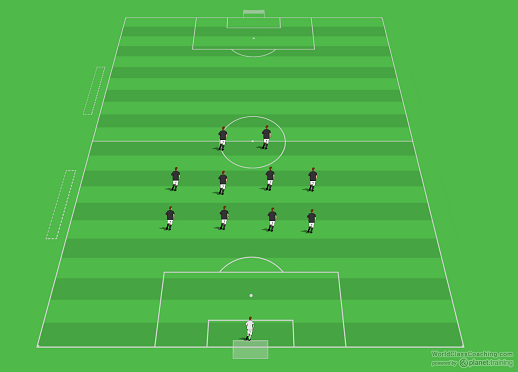
Next ( below ) we add a ball and move the shape into a basic serving / attacking set up. Note the lines dividing the field into thirds and in half. Note the great balance here in this perfect world as the service goes in.
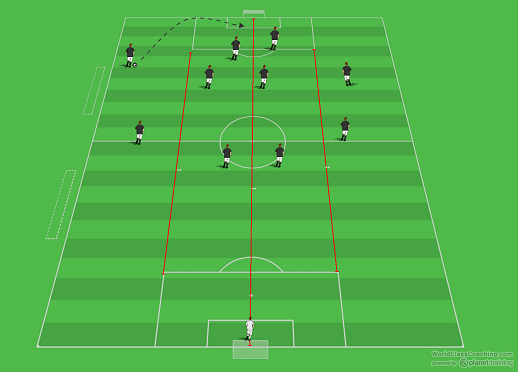
Here ( below ) is where the designation comes in. IF a goal is not scored, regardless is the next play is a goal kick or keeper possession, we all want our teams to drop in a bit and force play to one area of the field. By designating one player, most often a midfielder, to step up and try to pressure or win the outlet pass, the remaining players will be able to hold their shape and focus on supporting the effort to win the ball back as a unit.
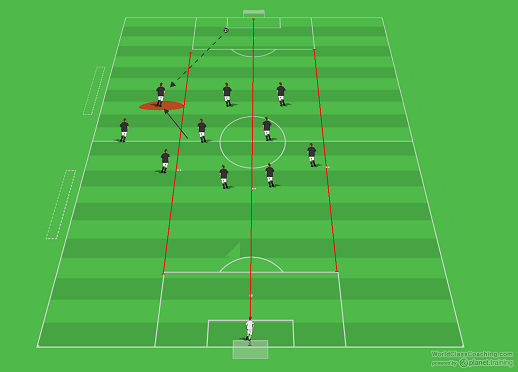
The next diagram shows a common scenario when there is no designation and the ball chaser ( marked in red ) steps up along with the other players in that zone. This may look like good high pressure play, but as the path of the ball marks, there is lots of easily exploited space for a more disciplined team to exploit.
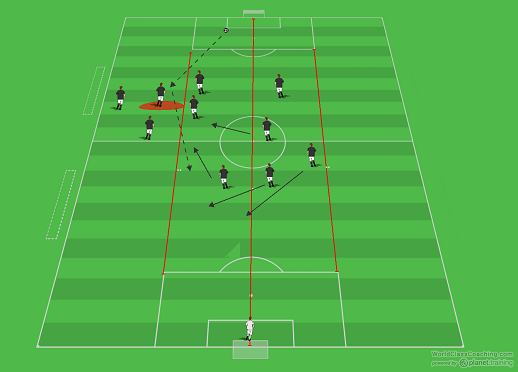
The final progression ( below ) shows just how costly the lack of organization can be and just how easily off balanced your side can become. ( note 9 players in one half of the field, none in good shape )
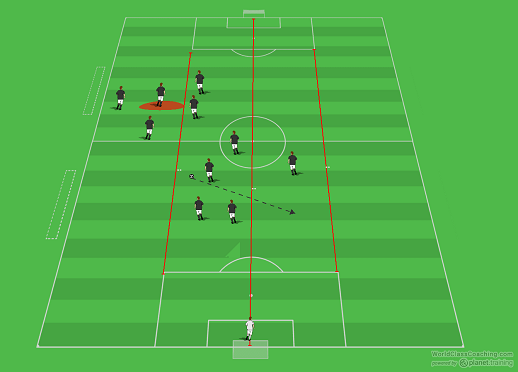
It doesn’t seem like a big issue, but the fact is, one more well placed player in the diagram above in a couple key areas, and it is a whole different ( and better ) situation for the defending side. Players who disregard position and chase the ball often start a domino effect which kills team shape. The drive to be on the ball and compete and make a difference is admirable but it has to be used in a way which helps the team – designation does this and will eventually lead to better positional understanding and discipline.
Set Up
The best way to structure or “ designate” a ball chaser is through smaller sided games. I use the width of one half of the field, or set up a 40 x 40 field using smaller goals, cones and corner flags. 4 v 4 ( as shown ) plus keepers works as 3 of the 4 field players are given zones – left, center and right while the ball chaser is free to roam. Zone players cover their zones first, then mark the men with in them. Even if there is a double team, only the ball chaser is free to come in and equal out the numbers.
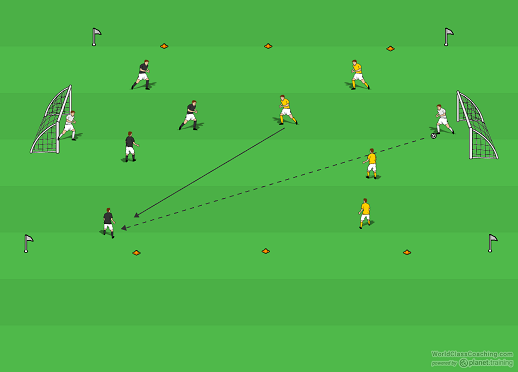
Play starts with one keeper sending the ball to the opposing side( above ).
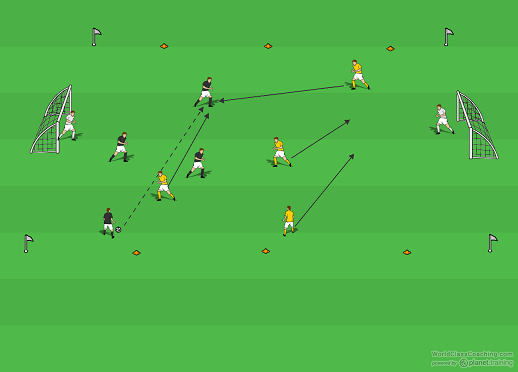
The ball chaser attempts to pressure. If the switch or supporting pass is made, the player whose zone the ball is in engages, while the others drop back ( above ).
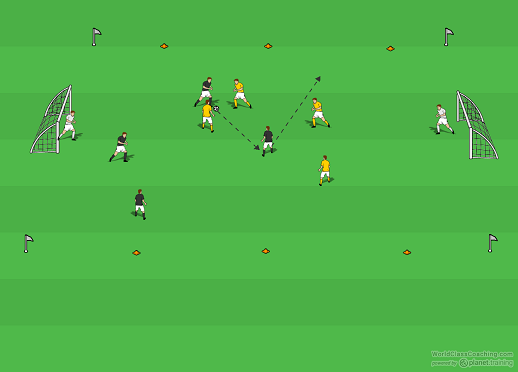
With the two players covering the center, even if there is penetration wide, the zone players can swap out and still cover, giving time for the ball chaser to work down and pressure ( below ).
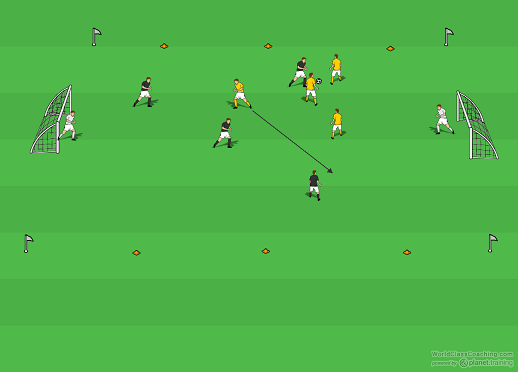
Coaching Points
I get a lot of young players who have developed bad ball chasing habits from playing poorly coached recreational soccer. I find this type of exercise quickly uses their existing abilities but also teaches the foundations of positional play. This drill is a win / win. The ball chaser and supporting players will either get better at pursuit and cover respectfully, OR, the ball chaser will tire and start recognizing opportunities to cover, hold, switch, press, etc….. The coach should encourage all of this.
By Mike Smith
Currently the Head Coach for University Heights Academy Boys Soccer in Hopkinsville, KY , Mike is in his 14th year as a high school head coach with 23 years coaching experience overall and 34 year as a student and fan of the game. He holds a USSF D License.


